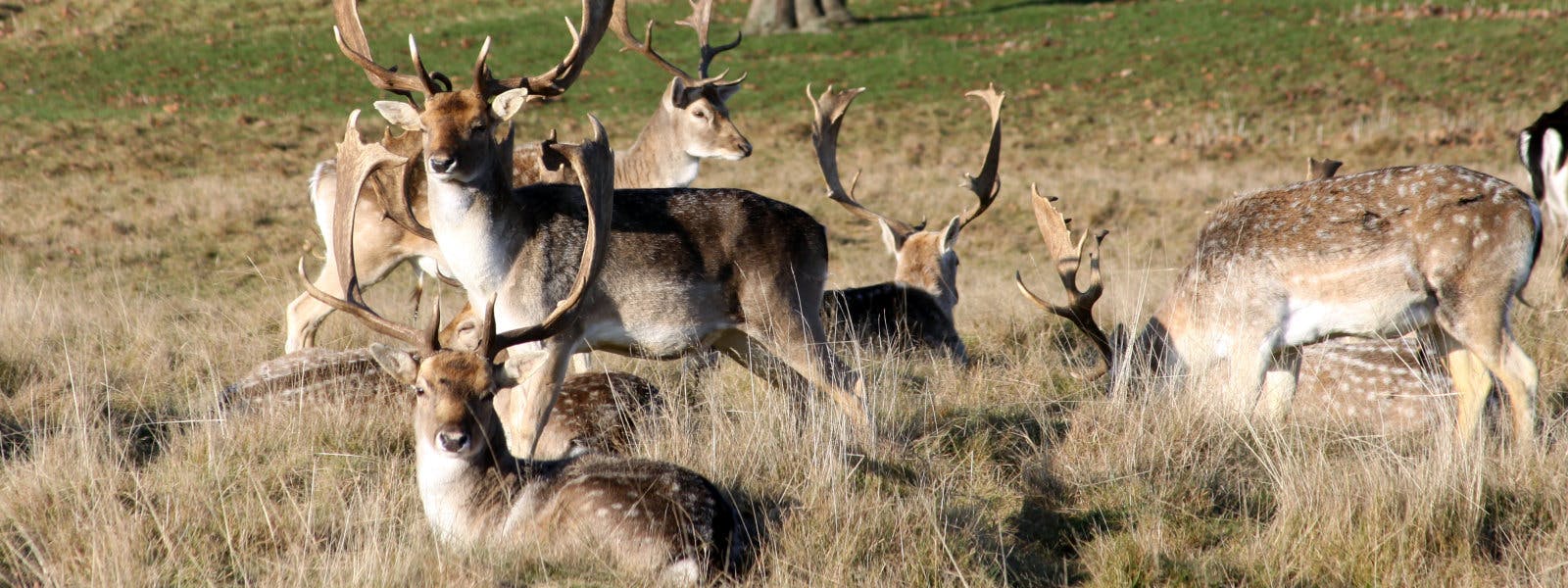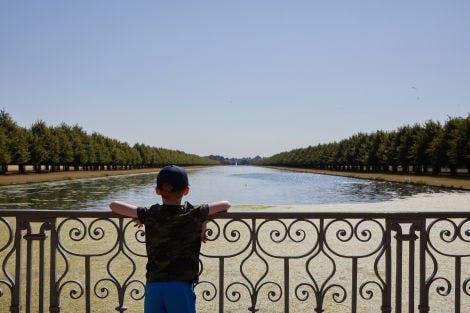
Home Park is a proudly appointed Site of Special Scientific Interest (SSSI)
Home Park
Accessible from outside the main palace and gardens at Hampton Court is Home Park, also known as Hampton Court Park, which is a royal park that occupies 750 acres of ancient parkland, as stunning as it is diverse.
Supporting a remarkable mosaic of acid and neutral grassland, woodland and wetland habitats, our park is proudly designated a Site of Special Scientific Interest (SSSI). Here you can observe the deer herd, veteran trees, rare plants and endangered invertebrates.
Paddock Gate is currently closed until 12 July due to the RHS Garden Festival.
Managing Home Park
Park regulations, legislation and policies help us to manage Home Park and balance the needs of different park visitors. Please find full details of park regulations and legislation here.
Fires and barbecues are strictly prohibited anywhere in Home Park and the Barge Walk.
Home Park Opening Times
- 07.00 – 18.30 (October – March)
- 07.00 – 20.00 (April – September)
Please be aware that from 01 May until 31 July dogs MUST be on leads in all areas of Home Park.
During this season female deer are most vulnerable when they are carrying and giving birth to young. Female deer hide their young in long grass to conceal them from dogs and other perceived predators. Having your dog on a lead will reduce the risk of your dog coming close to an area where fawns are hidden. We ask that you never touch a new born deer under any circumstances, even if its on its own. It is not abandoned, and its mother will be grazing nearby.
- At all times of the year dogs must be under close control in the deer park
- Give deer plenty of space. Keep at least 50 metres from deer
- Keep out of long grass and stay on mown paths, this also prevents disturbance to ground nesting birds such as skylarks
- Clean up after your dog
Failure to comply may result in prosecution.
Veteran trees
Within Home Park are a number of grand and enduring veteran trees - the dominant species being Tilia (lime trees). These can be located within avenues, along boundaries and woodland areas. They are an ecosystem within themselves.
The parks veteran trees and deadwood habitat is home to endangered saproxylic invertebrates (invertebrates associated with deadwood), making our park a very exclusive neighbourhood!
A policy of continuous re-planting has kept the tree community thriving - with some trees over 100 years old!
Acid grasslands
The acid grasslands of Home Park are comprised of a diversity of plant communities, some rare and of scientific significance. Once widespread across the floodplains of the Thames valley area, many of these plants remain today- making Home Park an important habitat.
The Long Water
Longwater Canal - known today as The Long Water - is a beautiful stretch of water completed in 1660 by King Charles II. In a spectacular show of affection - the king dedicated this water feature, complete with its double row of lime trees as a wedding present to his bride-to-be, Catherine of Braganza.
The 12-mile Longford river - commissioned by King Charles to bring fresh water to Hampton Court Palace - was dug by a royal tenant farmer by the name of Edward Manning. He completed the immense task in just nine months.
Passing through Hounslow, Feltham, Bedfont and Hanworth before entering the royal estate at Bushy Park and into Hampton Court Palace, The Long Water is towards the end of the river, flowing in to the River Thames.
During his reign, Oliver Cromwell extended and improved river flow. Following his death, King Charles II was desperate to abnegate the glory of the court, so contracted famous French landscape gardener, Andre Mollet, to design something breathtaking. Mollet diverted the old course of the Longford River at Hampton Court, pouring it into the magnificent canal of today.
Over time, each monarch's river modification played crucial roles in both landscape history and ecological terms enhancing bio-diversity dramatically and crafting the wondrous and thriving ecosystem we enjoy today.




